The 90-degree turn of the robot is different from 90-degree turn of the motor!
- #422
- 26 Apr 2017
- 3:02
90-degree turn of the motor
Ninety degrees are a quarter of a rotation of the wheel. During a pivot turn, only one motor is turning. A quarter of a rotation is a very short distance and the result is that the robot moves only a little.
90-degrees turn of the robot
The expected result of a 90-degree turn of a robot is that the robot spatially turns 90 degrees to the side. That turn is very different from the quarter-turn of the motor.
English
Now that we know how to use rotations and we also know how to use seconds and degrees, it's important to discuss what's 90 degrees. If I return to one of our previous programs for pivot turn, let me just start it so that you can see it on the camera. We move forward and as you see we are not turning to exactly right. We are turning slightly to the right but we must turn forward more. So, we must turn the whole robot to 90 degrees. And that's the subject of this video. In the software I'll create a new project
I'll zoom this project
and it's simple we need to make the robot turn to 90 degrees - turn right. So, I'll just take the large block
like this Here I'll click on degrees and here I'll set 90 degrees. And it's obvious. This should make the robot turn to 90 degrees with motor B. Let's download and see the result of this program.
Remember we programmed the block to turn the robot to 90 degrees and if I start the program, this will be the result of the program.
The robot is not turning to 90 degrees exactly to the right. Why? And that's a very common mistake in most of the classes and like 80 or 90% of all the students are doing this mistake. The reason is that we've programmed the wheel to turn to 90 degrees like this. And the wheel turning to 90 degrees does not mean that the whole robot will turn to 90 degrees. It's just the wheel turning to 90 degrees. Again.
So, turning the wheel to 90 degrees does not mean turning the whole robot to 90 degrees. What we must do is turn the wheel to 100, 200, 300 degrees. I don't know the correct value and this will make the whole robot turn to 90 degrees.
Courses and lessons with this Tutorial
This Tutorial is used in the following courses and lessons
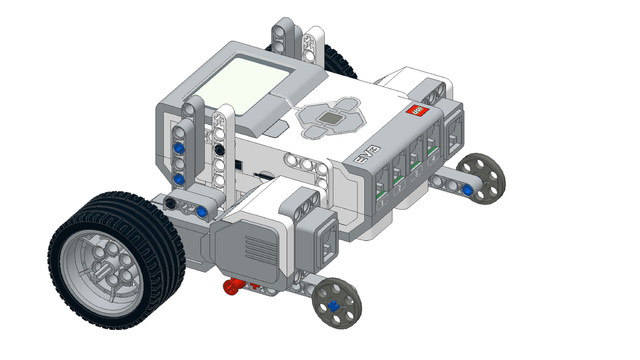
EV3 Phi. Introduction to robotics with LEGO Mindstorms
The things that you will be able to do with your EV3 robot by the end of this course are:
Freely move your robot towards desired target;
Avoid obstacles on the path of your robot using sensors;
Follow lines of any shape;
Detecting and picking up objects of any kind;
- 92
- 220:20
- 36

Turning with a LEGO Mindstorms Robot
So far we know how to make a turn in an arc, just like the real cars do.
Today we will see what other options our robots have for turning.
- 14
- 0
- 4
- 3d_rotation 0

Level A2. "Space exploration". Robotics with LEGO
The second level of the Robotics with LEGO curriculum for students in second, third or fourth grades.
A new sensor is introduced - the Ultrasonic distance sensor can help the robot avoid obstacles. Students work with new concepts like loop, degrees and medium motor. Robots can now do two different actions at the same time - while solving missions on a field, the third motor clears detected obstacles. The first robot with chain-treads is built.
- 63
- 3:02
- 117

Lesson 2 - Third Wheels and Square
Intro
Today we will test different support wheels and determine which one is most suitable for a robot that we will send to the moon.
The robot on the moon will be powered by a solar battery, but that means it has very little electricity and must not waste much of it to turn and navigate. You will need to find which support wheel resists the least when turning.
Another terrible problem would be if the robot got stuck. It will be too expensive to send a mechanic to the moon to help him. We will have to determine which wheels would get stuck easily in a small hole and which wheel can the robot pull out.
All teams should build different third wheels after which students can swap them.
At the end of the lesson, the most successful teams will be awarded a bonus task!

- 5
- 3
- 9
- 3d_rotation 2
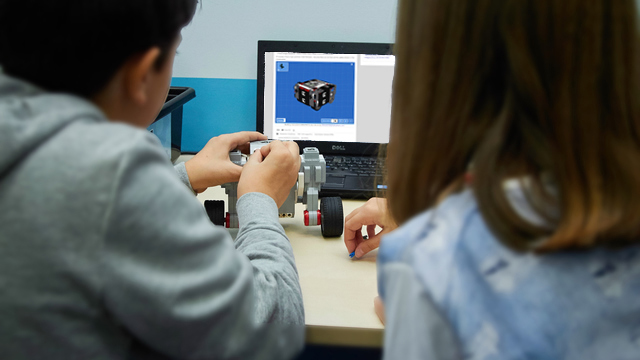
Instructors Remote Training
If you are working with students and you want to introduce Robotics to your class or you want to mentor a FLL team, but you are insecure about your technical knowledge in the Robotics field, then this is the right place for you. Having in mind teachers' busy schedule, we have design two different schedules and added an option to design one just for you. FLLCasts's Mindstorms EV3 Robotics Online Training is the perfect match for any teacher.
After the completion of each task the participant has to upload his solution for verification.
- 183
- 280:11
- 156

How to make the robot move
Let's review the LEGO Mindstorms EV3 Intelligent Brick
The EV3 brick is the main computer of your LEGO robot and it has a display, a few buttons and various ports.
- 24
- 0
- 11
- 3d_rotation 0
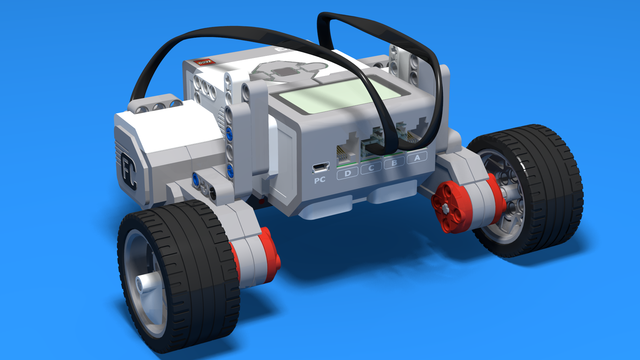
Robotics with LEGO - Level 1.0 - Adventure in Space
The first level of the Robotics with LEGO curriculum for students in fifth to twelfth grades.
Various constructions with robots are built. Learn how to control the motors so that the robot navigates around the Moon and Earth in various ways. Getting to know the first two sensors. The robot can feel its surroundings with the help of the Touch sensor and avoid obstacles.
The Ultrasonic distance sensor can help the robot avoid obstacles. Students work with concepts like loop, degrees and medium motor. Robots can now do two different actions at the same time - while solving missions on a field, the third motor clears detected obstacles.
- 126
- 123:52
- 150

Robotics with LEGO - Level 1.0 - Adventure in Space
The first level of the Robotics with LEGO curriculum for students in fifth to twelfth grades.
Various constructions with robots are built. Learn how to control the motors so that the robot navigates around the Moon and Earth in various ways. Getting to know the first two sensors. The robot can feel its surroundings with the help of the Touch sensor and avoid obstacles.
The Ultrasonic distance sensor can help the robot avoid obstacles. Students work with concepts like loop, degrees and medium motor. Robots can now do two different actions at the same time - while solving missions on a field, the third motor clears detected obstacles.
- 126
- 123:52
- 150
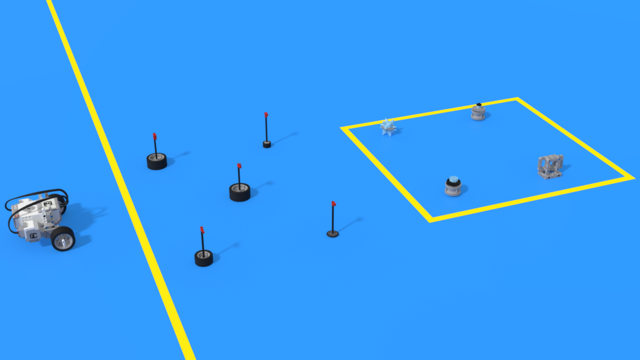
Lesson 3 - Clearing the landing zone
Intro
Today we are building a robot, what would automatically clear the landing site.
Before a space craft lands on the moon, you send a robot to clear the landing site. Your robot has landed on the Moon and its task is to clear the site and to prepare it for the landing of the bigger space ship.
The robot lands slightly further away from the site and it must find its way to it. Regretably it road is blocked by rocks that can not be moved. The robot must go around them.

- 9
- 4
- 2
- 3d_rotation 0
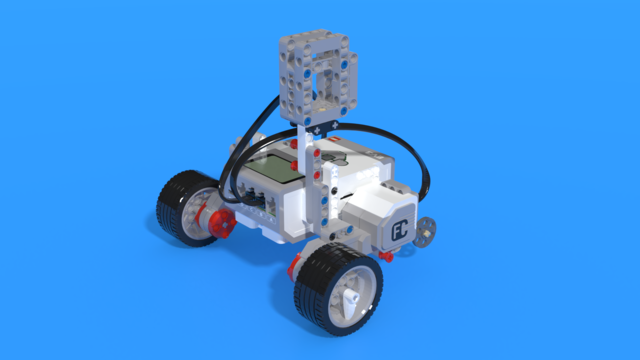
Python with LEGO Mindstorms EV3 - Level 1
The course introduces students to the programming language Python. We use LEGO Mindstorms EV3 Robots. Python is a popular programming language. It could be used for introducing students to programming, for academic studies, for developing machine learning algorithms and as a general-purpose language.
During the course, students learn how to read and how to develop Python programs. They use an Integrated Development Environment called Visual Studio Code. Robots are programmed to perform interesting and funny tasks like "bringing you water". The level ends with competition on a playing field with boxes.
- 74
- 28:18
- 114

Lesson 4 - Strange Bot
Introduction
Today we will encounter a significant problem our engineers have had to face ever since a man has had to step on the Moon, namely sending robots to the Moon. When we add something to a rocket that has to reach the Moon, you can imagine how many things need to be carefully calculated.
From the position of the rocket to the center of mass, to the momentum of the rocket and many other things. This is why when scientists wish to send a robot to the moon, they have to make a lot of compromises with its construction.
After the deployment of Moon Rover 2 to the Moon, scientists began working on a robot to deploy with the next Moon Rover. For this purpose, the robot needs to fit into the remaining space on the rover. This space is not in a standard shape, so the robot will have to have an irregular shape as well.
The plan is for it to be mounted on to the Moon Rover and when the vehicle is deployed from the rocket, the robot will disengage and will maneuver away before the astronauts proceed to drive it.

- 7
- 5
- 11
- 3d_rotation 1
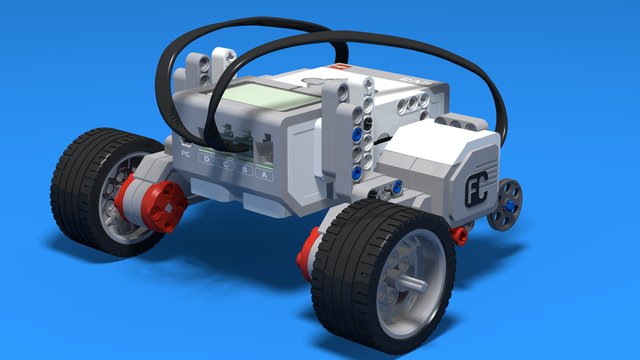
Level A1. Introduction. Robotics with LEGO
Introduction to robotics - The first level of the Robotics with LEGO curriculum for students in second, third or fourth grades. A journey in space, with robots. Various constructions with robots are built. Learn how to control the motors so that the robot navigates around the Sun, the Moon and Earth in various ways. Getting to know the first of the sensors. The robot can feel its surroundings with the help of the Touch sensor and avoid obstacles.
- 142
- 133:42
- 187
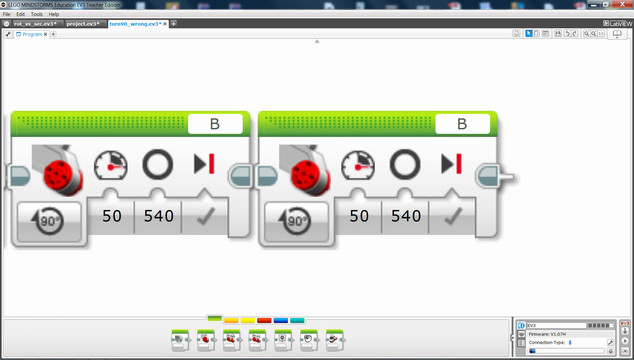
Lesson 5 - Clearing a landing spot
Remember to provide feedback to students regularly. It's important to give structured feedback in the form of a grade. Today, you'll need to grade your students following this article.
- 11
- 3
- 5
- 3d_rotation 0